-470 Austin Van 'Shell-BP' (1954-56)
In the last few weeks I have been working hard on my annual catalogue supplement for 2017. As I needed some more pictures for that purpose my photo sessions produced some nice new photos, some of which I will use for this contribution. I expect the supplement to be complete approximately next week and possibly some printed copies at the end of next month. So, some text and photos below.
This no. 470 Shell/BP version of the Austin A40 van was announced in May 1954. Meccano Magazine shows it together with the also new 10-ton Army Truck, no. 622. They are introduced and discussed in a review by The Toyman in the next month’s MM issue. First issued, the 'Shell/BP' was also the first one of the well-known Austin van trio to be discontinued, in 1956.
There is some slight variation to the casting in the course of time. Initially, the rear wheel axle ends are practically uncovered, with the risk of the axle to escape when maltreated during rough play. That problem has been solved by adding a small 'lip' to the casting over there, now covering the axle ends. It seems that only the Shell/BP vans have the uncovered appearance and that the subsequent 'Nestles' of October 1955 and the later 'Raleigh' have the axle ends always covered by that extension. Nevertheless, it remains relatively easy to replace the rear tyres by pulling down the base plate with a screwdriver or the like.
In the base plate the number 470 was embossed initially, but on introduction of the 'Nestles' Van, no. 471, the reference number was omitted, making this base plate universally applicable to all three vans. On the base plate drawing no. 13761 that number appears to have been removed on 8 November 1954 already. In fact, the Shell/BP van shows two different base plates, with a slightly different embossed lettering, which can hardly be distinguished from each other, as has been concluded by Jacques Dujardin. The first one has more round characters, the second one a flatter type. They also register slightly differently. With the first one the 'A' from Austin is on the right side of the 'N' of Dinky, with the second he is more or less straight. Both are seen with the number 470.
The Shell/BP is the only one of the three in duo-tone colour. This first version is the only one that still occurs in a US catalogue of 1954 under the originally planned number 32a and under the name Austin 'Service Van'. The number 32a was abandoned on 17 June 1953, as shown in drawing of the base plate mentioned above. A trade box is not known. It must have been one of the first smaller models to have an individual illustrated end flaps box only. The oldest box did not yet bear a catalog number on the illustration sides. Later boxes do show 470 in red ovals on both sides. It is remarkable that the box bears the name Austin Van 'Shell' only, without the addition 'BP', which is used in Meccano Magazine and the catalogues. Since the Shell/BP van was not in production after 1956 anymore, it will never be found with treaded tyres.
In the course of time, the rebates of the rear door window couple may differ, the second change in the casting. In the end, they seem to have completely disappeared at the Raleigh Van, no. 472, possibly as a result of repaired wear of the mould.
In 1963 a second Shell/BP vehicle was introduced, the big Shell-BP Fuel Tanker, no. 944. For this model a new tank unit, made of plastic, was mounted on the cab-chassis combination of the Leyland Octopus that was in use since 1956. Additions and corrections welcome. Kind regards, Jan
Jan—-So nice to see a post on another classic, 1950’s Dinky Toys small commercial vehicle. The Austin Vans were nicely done models, quite true to the prototype, and the three liveries and paint schemes are quite different. These, along with the Trojan Vans, the Bedford Vans, the Studebaker Tankers, and other other small trucks, make a wonderful assemblage of colors and liveries, and add greatly to any collection. Nicely done, with your usual great photographs!
Best regards, Terry
This was the only one of the three Austin vans that I didn't have as a child, and the reason was that I knew the colours were "wrong". On the main road at the end of my street was a busy Service Station which sold Shell petrol, (and Hillman cars). As a small boy I often saw the Shell-BP tankers making deliveries, and the shade of green used on their cabs was much darker, a more 'olive' shade. Even at the age of four or five, things had to be right !. Having said that, I had never seen a real Raleigh or Nestles van either, so I suppose I worked on the principle that they would be OK unless I found out otherwise. I have since bought a Shell-BP Austin, and don't value it any less than its brothers for what they were - well-made, colourful playthings which still have the ability to please this "little boy" in his mid-sixties.
Thank you, Kevin, for your eye-witness account. I think you are not the only one not having 'accepted' as a child some of these odd or incorrect colours Meccano inexplicably applied to various models. This correct darker shade of green was not unavailable in the factory, was it? Funny, that nowadays we seem to judge them more as colourful toys and appreciate these unrealistic characteristics better than in our childhood years! Kind regards, Jan
Dear Jan W.
In your post #1 at the top of this page you state : "This first version is the only one that still occurs in a US catalogue of 1954 under the originally planned number 32a and under the name Austin 'Service Van'."

This may be where the Japanese company Marusan Shoten found the name for their counterfeit of this Dinky, the copy is named "Service car' which is very close to the name in the US catalogue which unfortunately I do not have and it does not seem to be in the DTCA archives either. Could you please scan it for the Encyclopaedia ?
Kind regards
Jacques
Hi Jacques, I made that note in my private catalogue description. A footnote lacking there, I cannot find the original quote at this moment. So you may judge that statement as doubtful for the time being, until I will have found the source. However, the 1954/55 US catalogue gives the common 470 number and model name. Two references to the premature 32A number below, the first one in the description of changes as recorded on the base plate factory drawing, the second on sheet 9 of the Index to Dinky Toys job lists.
Thank you very much, Jan, for helping both Jacques and me with your find. I do not have that list myself, and I was doubting if I was right with my statement. I still do not know where this fact was mentioned. Anyway, this is the evidence - and now I will add the missing footnote to my catalogue description!
Kind regards, Jan W
Thank you Jan O this fills a gap.
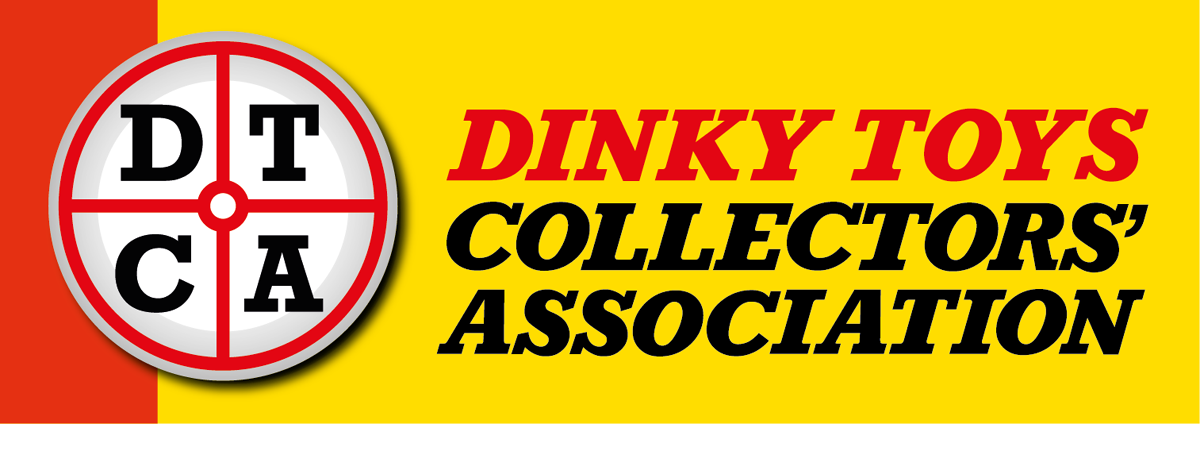

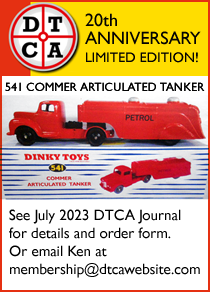
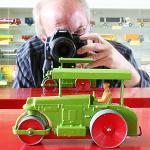
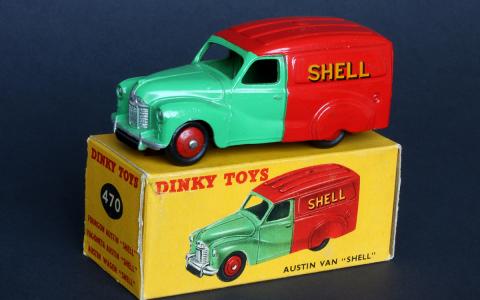







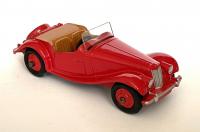
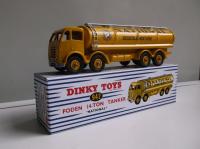

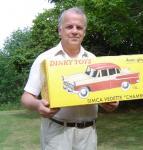





DTCAwebsite upgrade 2023
DTCAwebsite upgrade 2023
-105c and 383 4-Wheel Hand Truck (1949-1958)
-105c and 383 4-Wheel Hand Truck (1949-1958)
DTCAwebsite upgrade 2023
DTCAwebsite upgrade 2023
DTCAwebsite upgrade 2023
DTCAwebsite upgrade 2023
DTCAwebsite upgrade 2023
DTCAwebsite upgrade 2023
DTCAwebsite upgrade 2023
DTCAwebsite upgrade 2023
DTCAwebsite upgrade 2023
DTCAwebsite upgrade 2023
DTCAwebsite upgrade 2023
DTCAwebsite upgrade 2023
DTCAwebsite upgrade 2023
--22c Motor Truck (1933-50)
--22c Motor Truck (1933-50)
DTCAwebsite upgrade 2023
DTCAwebsite upgrade 2023
Trailer Caravans
Trailer Caravans
DTCAwebsite upgrade 2023
DTCAwebsite upgrade 2023
DTCAwebsite upgrade 2023
DTCAwebsite upgrade 2023
Trailer Caravans
Trailer Caravans
-138 Hillman Imp (1963-73)
-537 Renault 16 TL
-189 Triumph Herald Saloon (1959-64)
-255 Mersey Tunnel Police Van (1955-61)
DTCAwebsite upgrade 2023
-189 Triumph Herald Saloon (1959-64)